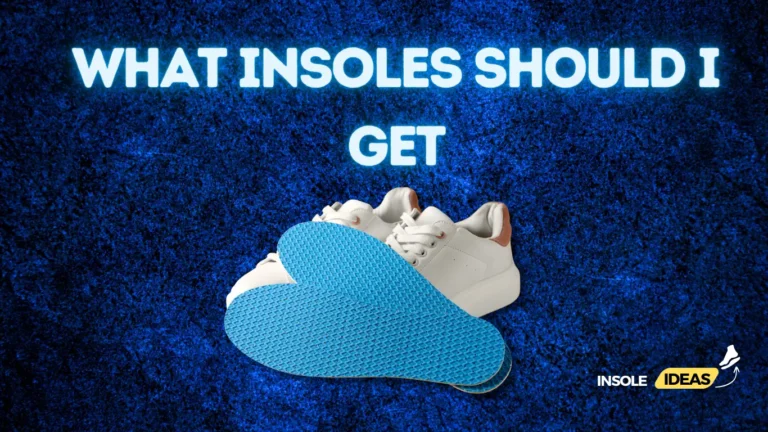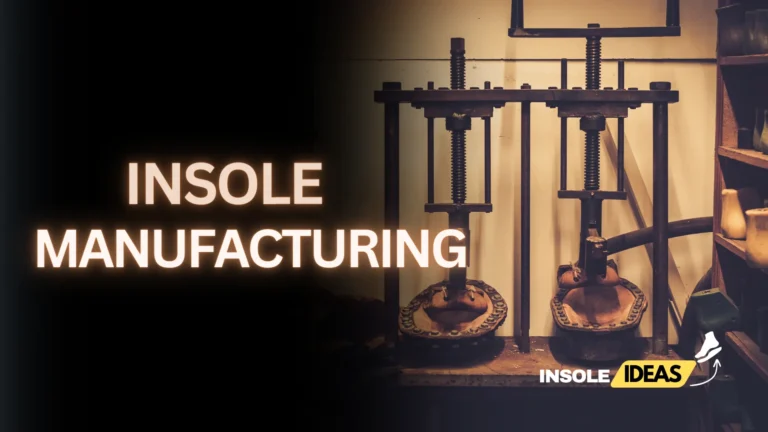Comfort and Style: A Comprehensive Guide to Insoles for Shoes
Unlock Comfort and Style
A Comprehensive Guide to Insoles for Shoes Footwear comfort is an underestimated aspect often overshadowed by style. Yet, the importance of comfort in footwear cannot be overstated. It directly influences our daily lives, impacting posture, mobility, and overall well-being. In this comprehensive guide, we delve into the transformative power of insoles, shedding light on how these seemingly small inserts can revolutionize your shoe experience. Moreover, we’ll provide a brief overview of the various types of insoles available, catering to diverse needs and preferences.
The Importance of Comfort in Footwear
In our everyday lives, comfort is crucial, particularly when it comes to the shoes we wear. Beyond merely avoiding discomfort, comfortable footwear positively impacts our posture, gait, and even mood. It minimizes strain on our feet, ankles, and knees, contributing to overall body alignment and reducing the likelihood of chronic issues.
How Insoles Can Transform Your Shoe Experience
Insoles are unsung heroes in the realm of footwear, offering a customizable solution to enhance comfort. They provide additional cushioning, support, and stability where standard shoe soles might fall short. By understanding the intricacies of insoles, individuals can unlock a whole new level of comfort tailored to their unique needs.
Brief Overview of Different Types of Insoles
In the quest for enhanced comfort, a myriad of insoles flood the market, each designed to address specific concerns. From cushioned insoles to memory foam options, a range of choices exists to cater to diverse preferences and foot conditions. Understanding these variations allows for informed decisions that align with individual needs.
Understanding the Basics
What Are Insoles?
Definition and Purpose
Insoles, also known as footbeds or shoe inserts, are removable inserts placed inside shoes to provide additional support, cushioning, or correction. Their primary purpose is to enhance comfort, alleviate pain, and address various foot-related issues.
Historical Evolution of Insoles
The use of insoles dates back centuries, evolving from simple padded materials to sophisticated, scientifically designed inserts. Initially crafted from natural materials like leather or cloth, insoles have progressed with technological advancements, now offering specialized features to suit diverse foot conditions and preferences.
Benefits of Using Insoles
Using insoles offers a range of advantages beyond just cushioning your feet.
Improved Comfort
Insoles are designed to provide extra cushioning, reducing the impact on your feet while walking or standing for extended periods. They absorb shock, easing the strain on your feet, especially beneficial for those with jobs or activities that involve prolonged standing.
Enhanced Foot Support
Proper foot support is crucial for maintaining good posture and reducing fatigue. Insoles offer additional arch support and help distribute your body weight evenly, reducing the stress on specific pressure points.
Alleviating Foot Pain and Discomfort
Heel spurs and plantar fasciitis are two foot-related conditions that insoles can help with.
By offering targeted support and cushioning, they help mitigate pain and discomfort, allowing for better mobility and comfort.
Correcting Posture and Alignment
Adequate support from insoles aids in correcting biomechanical imbalances, enhancing your overall posture and alignment. This correction reduces the strain on your ankles, knees, hips, and lower back, promoting better body mechanics.
Choosing the Right Insoles
Selecting suitable insoles involves understanding your feet and the intended shoe usage.
Foot Type Analysis
Understanding your arch type and pronation/supination pattern is pivotal in choosing the right insoles.
Determining Your Arch Type
Determining if your arches are neutral, high, or flat will help you choose insoles with the right amount of support.
Identifying Pronation or Supination
Analyzing how your feet roll when walking (pronation or supination) guides you toward insoles that can correct these gait issues.
Matching Insoles to Shoe Types
Different shoe types require specific insole designs for optimal comfort and support.
Athletic Shoes
In order to satisfy the demands of athletics and active lifestyles, insoles for athletic shoes frequently concentrate on shock absorption and stability.
Dress Shoes
Insoles for dress shoes prioritize slim profiles while still offering support, ensuring comfort without compromising style.
Work Boots
Work boot insoles focus on durability, support, and often include features like moisture-wicking for prolonged use in challenging environments.
Material Matters
The materials used in insoles play a significant role in their effectiveness and comfort.
Exploring Different Insole Materials
Materials like foam, gel, or specialized fabrics offer varying levels of support, cushioning, and durability.
Understanding Breathability and Moisture-Wicking
Breathable fabrics and moisture-wicking qualities prevents perspiration from accumulating, keeping your feet comfortable and dry all day.
Insoles Only Benefit Athletes”
The belief that insoles exclusively cater to athletes overlooks their universal advantages across various lifestyles and activities. While athletes benefit significantly from specialized insoles, their advantages extend far beyond the realm of sports.
Addressing Foot Conditions with Insoles:
1. Plantar Fasciitis: Plantar fasciitis, a common cause of heel pain, can greatly benefit from specially designed insoles. These insoles offer arch support, cushioning, and even distribution of pressure, alleviating the strain on the plantar fascia ligament and aiding in the healing process.
2. Flat Feet: Insoles designed for flat feet provide essential arch support, helping to redistribute weight and relieve discomfort. By promoting better foot alignment, these insoles assist in minimizing pain and fatigue associated with flat arches.
3. Bunions: Insoles for bunions focus on reducing pressure on the affected area and realigning the foot. They often feature cushioning and padding to alleviate discomfort caused by bunions, making daily activities more manageable for individuals dealing with this condition.
Insoles and Foot Health
Understanding the relationship between insoles and foot health sheds light on the broader advantages these supportive inserts offer.
Plantar Fasciitis
Plantar fasciitis is a condition that can seriously impair everyday activities. It is characterized by heel discomfort brought on by inflammation of the tendon that joins the toes and heel bone. Insoles designed to address this condition prioritize arch support and cushioning. By providing targeted support to the arch and heel, these insoles alleviate strain on the plantar fascia, reducing pain and promoting the healing process. Regular use of these specialized insoles can mitigate discomfort and allow individuals to engage in activities without the hindrance of persistent heel pain.
Flat Feet
Flat feet, where the arches collapse and the entire sole touches the ground, often lead to discomfort and fatigue. Insoles tailored for flat feet aim to restore the natural arch shape, providing necessary support and alignment. These insoles redistribute weight evenly across the foot, reducing strain on certain areas and alleviating associated discomfort. By offering arch support and promoting proper foot alignment, these insoles enhance comfort and mobility for individuals with flat feet.
Bunions
Bony lumps called bunions that develop at the base of the big toe can hurt and restrict what can be worn. Insoles designed for bunions focus on relieving pressure on the affected area. They often feature padding and cushioning around the bunion, reducing friction and discomfort caused by shoe contact. By minimizing direct pressure on the bunion, these insoles offer relief and make walking more comfortable for individuals dealing with this condition.
- The Fashion Aspect
Fashion insoles serve a dual purpose: not only do they enhance
the comfort of your shoes, but they also add a stylish touch.
- Insoles and Shoe Aesthetics
1. Invisible Insoles: These insoles are designed to provide support and comfort without altering the appearance of your shoes. They’re discreet and ideal for maintaining the original aesthetic of your footwear.
2. Stylish Insoles for Fashionable Footwear: For those who prioritize both fashion and comfort, there are insoles available in various designs, colors, and patterns. These insoles can complement your shoes while offering the necessary support.
- Maintaining and Cleaning Insoles
Proper care and maintenance of insoles can prolong their
lifespan and ensure continued comfort.
- Proper Insole Care Practices
Regularly airing out your insoles, avoiding exposure to
moisture, and using appropriate storage methods can prevent odors and maintain
their integrity.
- How to Clean Different Types of Insoles
1. Leather Insoles: Use a soft cloth with a mild cleaner to gently wipe away dirt and stains. Conditioning the leather periodically can help retain its suppleness.
2. Gel Insoles: These are usually cleanable with a moist cloth. To keep the gel from becoming damaged, avoid immersing them in water.
3. Memory Foam Insoles: Spot clean with a mild detergent and water, then allow them to air dry completely before placing them back in the shoes.
Each type of insole requires specific care to ensure its longevity and continued effectiveness. understand their benefits and uses.
FAQs
Insoles can often be transferred between shoes of similar size and style, but it’s essential to ensure they fit properly in the new shoes for optimal comfort.
The lifespan of insoles varies based on usage and material. Generally, replacing them every 6-12 months is advisable to maintain their support and cushioning.



